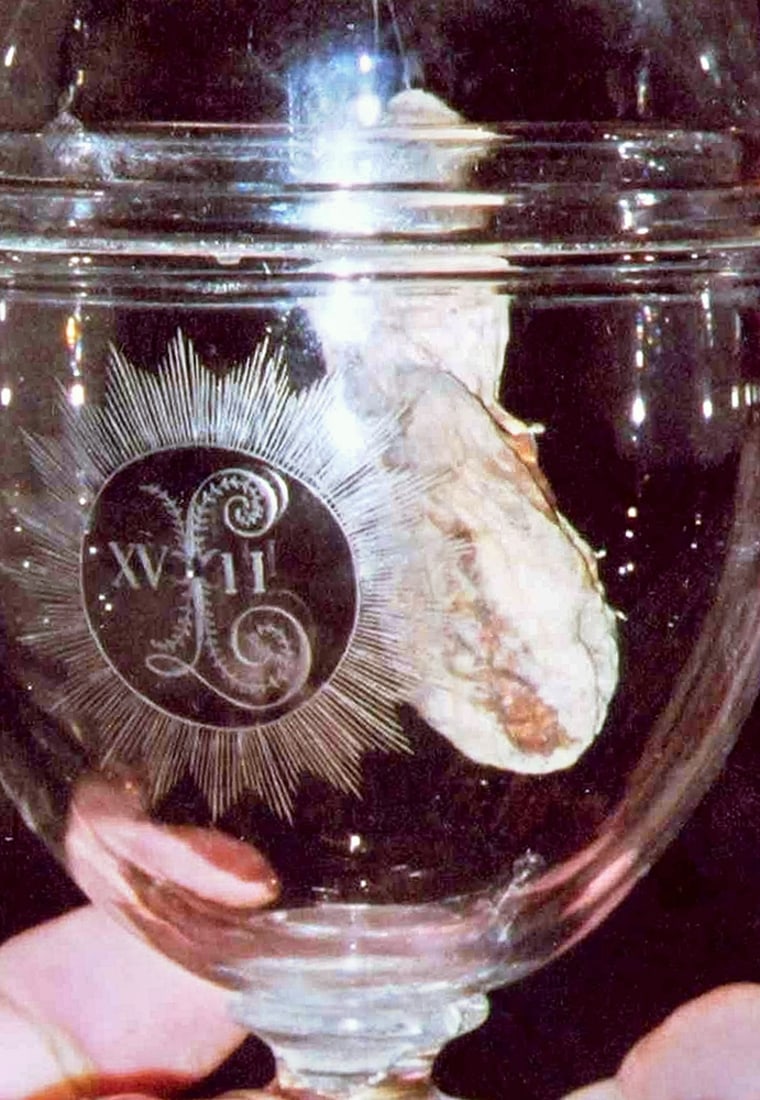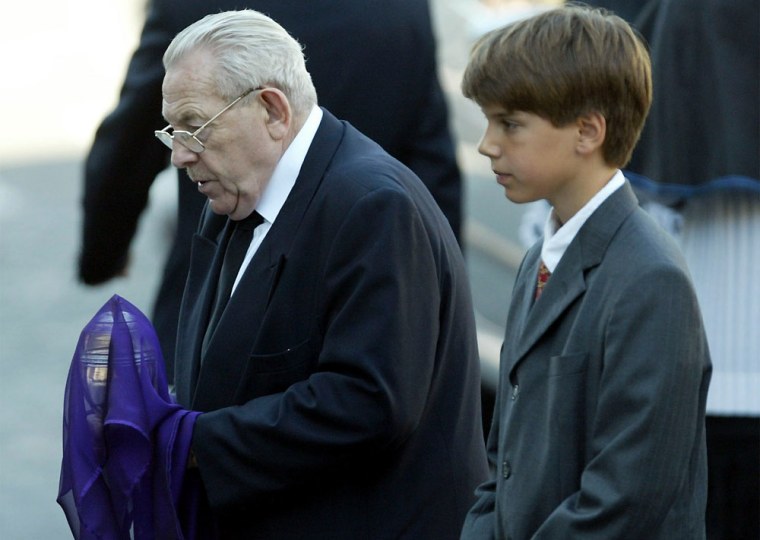France’s royal descendants and their supporters Tuesday buried the shriveled heart of Louis XVII, the boy king who died during the Revolution, after DNA tests confirmed the organ’s authenticity.
Exactly 209 years after the heart was cut from the king’s body, following his death in a grim Paris prison, a crystal urn containing the tiny pickled organ was carried to the cathedral of Saint-Denis outside Paris, burial place of French kings.
Following a two-hour Mass, it was laid to rest in the royal crypt next to the remains of his parents Louis XVI and Marie Antoinette, who were both executed by the revolutionaries.
'Long live the king!'
To a chorus of trumpets, Amaury de Bourbon de Parme, a young boy related to the former child king, brought in the urn draped in a purple cloth and placed it next to a crown on a column draped in the royal fleur-de-lis pattern.
“Finally, he will be able to rest in peace with his parents,” said Louis Alphonse de Bourbon, a Spanish banker whose blood ties date back to Louis XIV and who was cheered outside the cathedral by supporters shouting: “Long live the king!”
The ceremony comes four years after DNA tests confirmed that Louis-Charles de France perished in jail of tuberculosis at the age of 10, putting to rest centuries of speculation that he had escaped his captors and was survived by royal heirs.
The heart was removed from its resting place in the Saint-Denis cathedral in 1999 to enable scientists to compare its DNA makeup with samples from living and dead members of his family — including a lock of Marie Antoinette’s hair.
Eight-year-old Louis-Charles automatically became King Louis XVII when Louis XVI was guillotined before huge crowds in central Paris at the height of the revolution in 1793.
At the time, the boy was held like a caged animal in the forbidding Temple prison to prevent any monarchist bid to free him, and was forcibly separated from his mother.
At her subsequent trial, a signed statement from the boy was produced claiming that she had forced him to commit incest. Marie Antoinette was executed shortly afterward.

In his sermon, Cardinal Jean Honore said Louis-Charles had been a pawn of sadistic captors. He compared the child’s plight to that of modern-day victims of pedophilia.
“The conscience of a child is sacred. A child is not a toy,” said the cardinal. “In the treatment that he was subjected to, there was certainly the desire to eliminate a child who represented something greater than himself.”
Though organizers said they did not want the privately funded ceremony to have political connotations, it drew mainly monarchists who want to see Louis Alphonse de Bourbon restored to the throne. No senior government official was present.
“I am grateful toward this family because France gives the impression that it exists only since the Revolution,” said Monique Jaeger, 78, one of several hundred people who watched the Mass on a screen outside the church in the scorching sun.
By contrast, 20-year-old salesman Benjamin Zeller said he did not know about the ceremony and did not care.
“Those days are over,” he said, referring to the monarchy.
